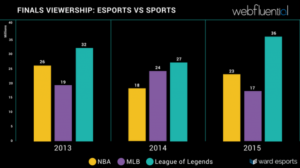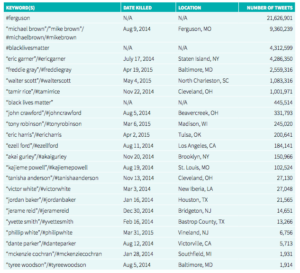Abstract
This paper discusses the relationship between communities and Web 2.0. Characteristics of both online and offline communities are discussed as well as how these characteristics are limiting or enhancing. The academic resources in this conference paper support the discussion of online communities as broadly supportive (Wellman and Gulia, 1997), weak ties that are created through an online community (Thompson, 2008), and social media platforms being ubiquitous (Porter, 2015, p.161). The example used is a Facebook group called Long Dogs WA. This is a specialised group for owners of dachshunds and has both online and offline elements. This example has aided in the discussing and supporting the main argument that online and offline communities strengthen one another when working together.
Keywords:
Online, offline, communities, Web 2.0, weak ties.
Introduction
The rise of Web 2.0 as a participatory and communicative platform has created a space for users to collaborate online and stimulated the formation of online communities. As social media and virtual platforms have become a prominent aspect of everyone’s life (Porter, 2015, p.161), so too have online communities. The traditional sense of community of being village-like and in-person is no longer sufficient to describe the ever-changing world of Web 2.0. Physical communities are often bound to limitations such as geographical location, race, age and gender, while virtual communities encourage the breaking of these limitations and allow people of all demographics to communicate online (Katz, Rice, Acord, Dasgupta and David, 2004, p. 326). Online communities differ from those offline as they are formed as a result of a shared interest, rather than a physical connection and provide members with “companionship, emotional support, services and a sense of belonging,” (Wellman and Gulia, 1997). This paper will discuss how online and offline communities influence each other, if they pose limitations on one another or allow for growth, and ultimately how they successfully coexist. Although this paper will explore a counter-argument, it will present the conclusion that online and offline communities strengthen one another. The example to be used is a Facebook group that I am a member of called Long Dogs WA (2018); this is a specialised group for dachshund owners that possesses both online and offline aspects. This example along with an in-depth discussion of how Web 2.0 has influenced communities will put forward the argument that the combination of both online and offline communities strengthen one another.
Discussion
Relationships are very rarely maintained solely with face-to-face communication, which is where Web 2.0 communities play a major role in our lives. Although it is difficult to define community due to the various forms, for the purposes of this discussion it will be defined as a group of members that share a common interest and interact with each other as they “actively refine the domain of their shared interests,” (Porter, 2015, p. 162). The elements of an online community include members who possess a shared interest, the voluntary and varied extent of participation of members (Aguiton and Carson, 2007), and an online platform where these communications take place. However, offline communities are based around physicality and people being together, and the defining characteristic is face-to-face communication. Offline communities are more structured as they have regular meetings and someone who facilitates these meetings, meaning that their communication is arranged and directed. Due to the voluntary participation in online platforms, the discussion is fluid, unstructured and can consist of people from different geographical regions, leading to the idea from Wellman and Gulia (1997) that online communities are often broadly supportive. Everyone’s personal community is different, and whether that consists of family, friends, colleagues, or acquaintances, it is very unlikely that these people will all know each other, which is why we join online communities (Wellman and Gulia, 1997). I argue that we cannot classify online communities as solely broadly supportive or narrowly specialised, as most communities are one or the other, if not a combination of both. Wellman and Gulia (1997) state,
“If the Net were solely a means of information exchange, then virtual communities played out over the Net would mostly contain only narrowly, specialized relationships,”
however, as information is only part of the reason for online communities, they can also be described as broadly supportive as “emotional therapy itself is explicitly provided through the Net, “ (Wellman and Gulia, 1997). Online communities create an opportunity to connect with others, which may not be possible for a community that was constructed offline. In the case of Long Dogs WA, it was my narrowly specialised interest that lead me to become a member of a broadly supportive group. For example, if I were to post on my personal Facebook profile asking a question about the dachshund breed, it is unlikely I would get a helpful response if any at all. However, if I were to post on the Long Dogs WA Facebook group which has over 3,000 dachshund owners and enthusiasts, I am more than likely to get a response from someone who has experienced first hand what I am asking about or who has helpful information. Online communities are a space for support, advice, comforts, or discussions, which is the exact reason I am a member of Long Dogs WA.
The Long Dogs WA community has characteristics of both online and offline communities that work together to strengthen one another. The Long Dogs WA community possesses characteristics of an offline community such as face-to-face interaction, a facilitator and arranged meetings, as they meet for walks once a month, hold fundraising events, and often members will meet in small groups for play-dates with their dachshunds. However, an online community breaks all these barriers that define an offline community. An online community can “create and preserve ties among people who are physically separate,” (Katz et al, 2004, p. 326). Online communities allow one to create an online persona, express themselves in a way they may not usually in person, and communicate with people from all over the world. Members of the Long Dogs WA Facebook group often post photos in the group of their dachshunds, ask questions about behaviour, ask to meet for play-dates to socialize their dogs, advice on medical issues, and sometimes even for support when they are going through a difficult time with their pets. All of these online interactions create a network within the community and strengthen Wellman and Gulia’s (1997) ideas surrounding broadly supportive online communities.
There are geographical limitations to the online group, which I have discussed as a characteristic of an offline community, however, this limitation is set in place due to the offline community meet ups. For example, to be a member you must live in Perth, as that is where all the events and meet-ups are held. Although the online community would thrive with members from all over Australia contributing, it would be difficult to conduct offline interactions with such a large group and geographically diverse members. Although this Facebook group possesses characteristics of both the offline and online communities, it is evident that the combination of virtual and face-to-face interactions strengthen one another by increasing connections. It is likely that an offline Long Dogs community existed before the online element, which contradicts my initial argument, but the prominence of Web 2.0 as a communication tool has lead the group to transition into a very active online community.
I argue that the offline community could not be possible without the online community as this is where all of the offline activities are organised. Most of the online conversation is constructed around the offline community, so although the online community would still be possible without the offline element, I argue that it would be a less-active community. All of the offline activities are organised via the Facebook group, and to be part of the online community, you must first do something offline – be an owner of a dachshund. I would never have known about, and joined, the online community if the offline presence did not exist. I first found out about this online community while talking to someone as I was walking my dachshund, this person encouraged me to join and spoke about the benefits of the group. The Long Dogs WA group has both online and offline communities that both contribute to the successfulness of the group.
For some, the willingness of people to communicate online outweighs the willingness of face-to-face communication. Many people prefer to be members of online communities rather than offline communities as they have more options in the way of how they communicate (Gulia and Wellman, 1997). One of the appeals of online communities is that relationships and communications do not have to be instantaneous. The virtual element allows users to take time constructing a response, delay conversations, or choose to not participate in conversation at all. Being a member without contributing anything is described by Nonnecke, Andrews and Preece (2006) as ‘lurking’. Lurking allows one to have an insight into other peoples’ lives without having direct contact. Although one can join a common purpose online community, such as Long Dogs WA, simply being part of a social networking site allows you to be a member of an online community (Thompson, 2008). Many of the people that associate with one another online, whether that is a friendship or mutual follow, are considered to be weak ties. Weak ties are those one would not consider a close friend but an acquaintance, yet are associated on social media. Thompson (2008) estimates that only 20 people on her social media sites are what she considers close friends or family, and the rest are acquaintances that she has acquired over a few years, which she considers to be her weak ties. For example, members of Long Dogs WA whom I do not know in my offline-life but have contact with them through this online community. Having weak ties in your online community can greatly benefit your offline community and life. For example, “If you’re looking for a job and ask your friends, they won’t be much help; they’re too similar to you, and thus probably won’t have any leads that you don’t already have yourself. Remote acquaintances will be much more useful because they’re farther afield, yet still socially intimate enough to want to help you out,” (Thompson, 2008). Having a number of weak ties, who you do not have to be directly in contact with, can also better help one understand their own community surrounding them. As a result of being part of the Long Dogs online community I have met people that are willing to pet-sit my dachshund, Charli, and as dachshunds can have specific needs and issues it is important to me to have someone look after Charli who has previous experience with dachshunds and knows the breed well. Creating weak ties through Long Dogs has allowed me to feel comfortable leaving Charli with another member if I go away, and is an example of the offline relationships that can be built through online communities, strengthening the initial argument.
Conclusion
Online and offline communities coexist together as they have different strengths and properties that attract members. Offline communities are commonly formed due to geographical location, but are often limited by age, race and gender, whereas online communities are free from these limitations and formed on the basis of a mutual interest. Due to this, online communities are not narrowly specialised, as that would rely on solely an exchange of information, they are broadly supportive. In the discussion of Long Dogs WA, a narrowly specialised interest lead me to be a part of a broadly supportive community, which provides me with support, advice, comfort and discussions. The elements of online and offline communities work together to strengthen one another and provide different levels of engagement to suit all members. Some offline communities would not thrive without the online element, for example the Long Dogs WA community. The online community allows for conversation and organisation around the offline society, yet still provides all the aspects of an online community, “companionship, emotional support, services and a sense of belonging,” (Gulia and Wellman, 1997). The flexibility of online communities encourages users to maintain weak ties within their online society. Weak ties are useful to our offline lives as they give us access to people that we may not normally communicate with face-to-face. Offline communities would often not be successful without an online element for communication purposes. The discussion in this paper has provided an argument that examines the ways that offline communities are strengthened by Web 2.0 and online communities. Web 2.0 is such a prominent aspect of almost everyone’s life that voluntary participation in online communities has become a necessity to strengthen offline relationships.
References
Aguiton, C., & Cardon, D., 2007. The Strength of Weak Cooperation: An Attempt to Understand the Meaning of Web 2.0. Communication & Strategies. 65(1). 51-65. Retrieved from https://papers.ssrn.com/sol3/papers.cfm?abstract_id=1009070
Katz, J., Rice, R., Acord, S., Dasgupta, K., & David, K. 2004. Personal Mediated Communication and the concept of Community in Theory and Practice. Annals of the International Communication Association, 28(1), 315-371. Retrieved from https://www.tandfonline.com/doi/abs/10.1080/23808985.2004.11679039
Long Dogs WA. [ca. 2018]. Facebook group. Retrieved from https://www.facebook.com/groups/77155173945/
Nonnecke, B., Andrews, D., & Preece, J., 2006. Non-public and public online community participation: Needs, attitudes and behaviour. Electronic Commerce Research, 6(1), 7-20. Retrieved from https://link.springer.com/article/10.1007%2Fs10660-006-5985-x
Porter, E., 2015. Virtual Communities and Social Networks. In L. Cantoni & J. A. Danowski (Eds). Communication and Technology. 161-179. Retrieved from https://books.google.com.au/books?id=AhxpCgAAQBAJ&lpg=PA161&ots=bZIat75i-L&dq=online%20virtual%20communities%202015&lr&pg=PA161#v=onepage&q&f=false
Thompson, C., 2008. Brave New World of Digital Intimacy. Retrieved from https://www.nytimes.com/2008/09/07/magazine/07awareness-t.html?_r=1
Wellman, B., & Gulia, M., 1997. Net Surfers Don’t Ride Alone: Virtual Communities as Communities. Retrieved from http://citeseerx.ist.psu.edu/viewdoc/download?doi=10.1.1.28.4435&rep=rep1&type=pdf








